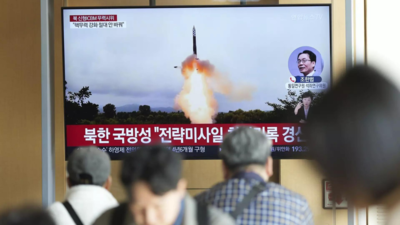
North Korea announced the successful test of its latest intercontinental ballistic missile "
Hwasong-19
," with the state media labeling it "the world’s strongest missile."
According to the Korean Central News Agency (KCNA), the new missile showcases enhanced altitude and flight duration, positioning it as a step closer to Pyongyang's goal of a
nuclear-capable
ICBM that could potentially reach the United States.
The state-run Korean Central News Agency designated the missile as "Hwasong-19" ICBM, describing it as "the world's strongest strategic missile" and "the perfected weapon system."
While South Korean military officials suggested the possibility of a solid-fueled missile test, KCNA's report didn't specify the propellant type used in Hwasong-19. Exhaust flames in official photographs indicates the likely use of solid fuel technology, according to experts, which enables faster launches and improved concealment. Prior to this test, the Hwasong-18 was North Korea's most advanced ICBM.
Solid-fueled missiles, unlike their liquid-fueled counterparts, come pre-loaded with propellant, allowing for faster launches and greater secrecy by reducing visible preparation times. This technical leap would mark a shift from the Hwasong-18, North Korea's previous top ICBM, to a model with potentially higher operational readiness and improved concealment.
Kim Jong Un observed the launch with his daughter, Kim Ju Ae, whom Seoul intelligence identifies as his potential successor. Kim hailed the test as "an appropriate military action" in light of perceived threats to North Korea’s security, lauding the scientists and engineers involved for their work in reinforcing the country's "matchless strategic nuclear attack capability."
While North Korea’s capability to strike South Korea with nuclear weapons hasn’t been questioned, its ability to reach the continental United States effectively still remains doubtful. Technical challenges including reentry vehicle protection, guidance systems refinement, and multiple warhead deployment capabilities still hinder North Korea’s capabilities to strike farther countries.
The launch timing appears strategic, occurring before the US presidential election and amid international criticism over North Korea's alleged deployment of troops to Russia for the Ukraine conflict.
US officials report approximately 8,000 North Korean troops have been positioned near the Russia-Ukraine border. The test occurred shortly after US and South Korean defense officials urged North Korea to withdraw its military personnel from Russia.

 2 weeks ago
5
2 weeks ago
5










 English (US) ·
English (US) ·